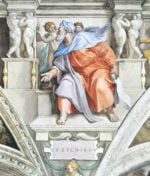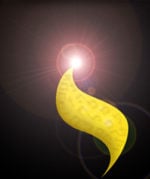
Five-Hundred-Year-Journey
Alexander Poltorak Abstract This essay addresses the anigmatic statement of the Jewish Sages, stating that G-d created this world with the letter Heh and the

Alexander Poltorak Abstract This essay addresses the anigmatic statement of the Jewish Sages, stating that G-d created this world with the letter Heh and the
And it came to pass, when he was come near to enter into Egypt, that he said unto Sarai his wife: “Behold now, I know

The forty-nine days between Passover and Shavuot are called the days of Sefira or the days of counting Omer—Sefirat HaOmer—when Jews count every day as

And every meal-offering of thine shalt thou season with salt; neither shalt thou suffer the salt of the covenant of thy G‑d to be lacking

Meditations on the Maaseh Merkavah – I We do science by studying nature. We study physics in a lab, peering into space or working out

Now, therefore, write ye this song for you, and teach thou it the children of Israel.” (Deut. 31:19) The four known fundamental forces are: gravitational
Do you like riddles? Here is a riddle – what do these two figures represent in the context of Exodus? No Idea? How about